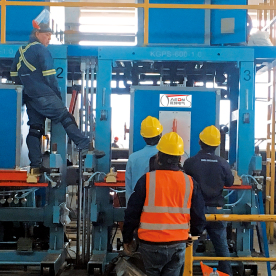
Transforming Industry with Energy-Saving Induction Heating Equipment: A Smart Solution for Sustainable Manufacturing Processes
In today’s fast-paced world, where technological advancements are pivotal in enhancing efficiency and reducing environmental impact, energy-saving induction heating equipment has emerged as a game-changer for various industries. The move towards energy-efficient solutions is not merely a trend; it is becoming a necessity as businesses strive to reduce operational costs while meeting stringent environmental regulations. This article will explore the benefits, applications, and future prospects of induction heating technology, highlighting its role as a sustainable solution in manufacturing processes.
Induction heating is a method of heating electrically conductive materials through the principle of electromagnetic induction. Unlike traditional heating methods, which rely on direct heat sources, induction heating equipment generates heat rapidly and efficiently within the workpiece itself. This process minimizes energy loss and significantly enhances heating speed, making it an ideal choice for a wide range of industrial applications.
One of the hallmark characteristics of energy-saving induction heating equipment is its efficiency. Traditional heating methods often waste a significant amount of energy through thermal radiation and convection. In contrast, induction heating can achieve efficiency rates exceeding 90%, significantly lowering energy consumption and operational costs. This efficiency not only translates to reduced energy bills but also lessens the carbon footprint of manufacturing processes. As industries face increasing pressure to adopt sustainable practices, energy-saving induction heating becomes a viable solution for reducing environmental impact.
Another benefit of induction heating technology is its precision and control over the heating process. Induction heating equipment can be finely tuned to produce specific temperatures, making it suitable for delicate applications that require exacting standards. For instance, in the aerospace and automotive sectors, manufacturers can perform tasks such as heat treating, soldering, and brazing with exquisite precision. The ability to control heating times also reduces the risk of damage to sensitive components, thereby improving overall product quality and consistency.

Transforming Industry with Energy-Saving Induction Heating Equipment: A Smart Solution for Sustainable Manufacturing Processes
The versatility of energy-saving induction heating equipment makes it applicable across various industries. In metalworking, induction heating is used for hardening, tempering, and melting metals, which results in enhanced mechanical properties and performance. In the food processing industry, induction heating promotes uniform cooking and pasteurization, ensuring food safety while conserving energy resources. Furthermore, it is gaining traction in the renewable energy sector, where it is utilized in the manufacturing of solar panels and wind turbines, driving the shift towards sustainable energy solutions.
As the manufacturing landscape evolves, the integration of smart technology into induction heating equipment is becoming increasingly prevalent. Advanced features such as real-time monitoring and automated control systems allow manufacturers to achieve higher levels of efficiency and productivity. For example, the incorporation of IoT technology enables remote management of induction heating processes, thereby reducing downtime and optimizing performance. Such innovations not only enhance operational efficiency but also contribute to better resource management, aligning with sustainability goals.
Despite the numerous advantages, businesses contemplating the transition to energy-saving induction heating equipment may face challenges. The initial investment costs can be significant, particularly for smaller companies with limited budgets. However, it is essential to consider the long-term savings on energy bills and operational costs. Additionally, training staff to operate and maintain new equipment is vital to ensure optimum performance and safety.

Transforming Industry with Energy-Saving Induction Heating Equipment: A Smart Solution for Sustainable Manufacturing Processes
In conclusion, energy-saving induction heating equipment represents a transformative approach to modern manufacturing. As industries continue to embrace sustainability and seek innovative solutions to enhance productivity, induction heating technology stands at the forefront. With its remarkable efficiency, precision, and versatility, it not only drives operational improvements but also contributes to a greener future. As the demand for sustainable practices grows, investing in energy-saving induction heating equipment will be a smart choice for manufacturers striving for excellence in a competitive marketplace. The future of induction heating is bright, and its continued evolution will undoubtedly play a significant role in shaping the industry landscape for years to come.Precision-Crafted Spare Parts for Annealing Machines



